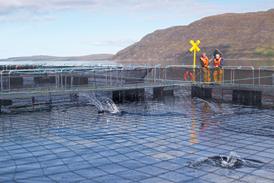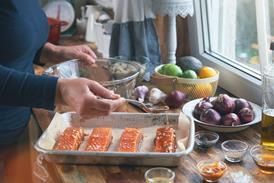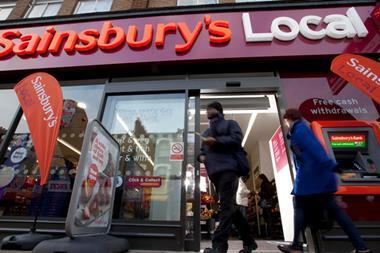Fmcg firms think they're done with the telly and are making an exhibition of themselves in public places, says Karen Dempsey
The long-term love affair between fmcg advertisers and TV is beginning to cool partly because some big brands have decided they can't afford to woo their audiences through the box any more. Talk to fmcg companies and they'll tell you that they're being priced out. The rise in the number of dotcoms advertising on television has driven up TV price inflation. And media fragmentation means it is getting harder to reach big chunks of the target audience typically housewives with kids at one time.
As a result, fmcg marketers are having to think a lot harder and more creatively about how to reach their audience and how to get value out of every media pound.
Research from The Billett Consultancy a media auditing company that measures and aims to enhance advertising media effectiveness reveals that between 1995 and 1999 food's share of UK TV advertising fell from 27% to 21%, while its share of total UK display advertising expenditure (£7.2bn in 1999) declined from 16% to 13%. The cost of reaching the housewife audience rose 33% over the same period.
John Billett, chairman of The Billett Consultancy, warns: "TV is declining as an effective medium for food advertisers [those targeting the housewife and family audience]. You have to deliver better integrated multimedia campaigns or face diminishing returns on your advertising expenditure."
This is something marketing directors are all too aware of. Andrew Marsden, Britvic marketing director, says the escalating cost of airtime is forcing a lot of people to consider very carefully the share of TV in their schedule. "Media planning and buying is increasingly important on the marketing director's agenda. It's a major source of competitive advantage if it is bought well," he says.
Pascale Muylaert, McVitie's marketing director, says: "Media inflation is still increasing ahead of price increases on food products. This obviously is causing concern and prompting us to continually review the effectiveness of our media investments. However, TV remains a critical part of our media strategy. It has so far taken the lion's share of our media investment as it has been an efficient way of reaching our target audience. But we select our media based on the individual brand's communication needs rather than treating TV as a prerequisite."
For example, McVitie's Tubes (a campaign to encourage people to eat biscuits when they are out and about) are supported with a mix of TV and posters while McVitie's Caramels were launched last year with a heavyweight women's press and poster campaign.
The fact so many fmcgs include outdoor in their media schedules means the poster industry has been the main beneficiary of the shift in spend away from TV. Billett says outdoor's share of food advertising has leapt from 3% to 9% in the last five years.
Fmcg advertisers ploughed an additional £13.7m into outdoor last year, an increase of 20% according to poster specialist Outdoor Connection.
Carole Kerman, md of Outdoor Connection, says: "TV is rapidly becoming the jilted partner of fmcg advertising budgets. Not only are the likes of Mars, Nestlé and Unilever increasing their spend on outdoor, but die hard TV perennials, such as Procter & Gamble, have now joined the party. And as TV media owners stung them with huge rate increases when dotcom advertiser demand set in, who can blame them? The outdoor medium is becoming much more of a must have. It's also doing the job. One contractor, Maiden Outdoor, is so confident its point of sale six-sheets can generate sales, it offers money back if proven otherwise."
Outdoor the sector that encompasses billboards, six-sheets as well as buses, London Underground sites and a host of ambient media opportunities can create a broadcast I'm everywhere' effect. Outdoor lends itself to innovative creative executions that help brands stand out on the street and it beats TV on the location, location, location platform as ads can be placed to hit consumers just before they go into shops.
Current campaigns include St Ivel attaching floating cows to billboard sites located near supermarkets to back up its TV campaign for St Ivel Gold Light. Evian's new summer ad campaign uses press and posters including ones placed strategically near CTNs.
Nestlé Rowntree was the top fmcg spender in outdoor last year with a spend of £11.4m. It is one of the most proactive outdoor advertisers and is continually exploring new and innovative communication channels.
Recent Nestlé campaigns include trolley advertising for Toffee Crisp Biscuits to back a generic TV campaign for the brand. And it is the first advertiser to use the new StreetSites medium (ads on BT phone boxes) for KitKat, appearing on 1600 StreetSites in major cities across the United Kingdom.
Procter & Gamble has a growing love affair with print, particularly the glossies. It says that print is a dynamic tool especially when it come to beauty care products and is unique in being able to bond with women. It recently launched its new anti ageing cream, Oil of Olay Total Effects, through print with "unprecedented uptake".
Press share of food advertising budgets has grown two percentage points to 12% over the last five years, according to Billett.
Radio has also become an established garment in the fmcg media wardrobe. Rupert Steele, head of media planning services at the Radio Advertising Bureau, points out that radio has traditionally been used in fmcg markets as a support to TV. "It's intrusive, it's still relatively inexpensive and can reach people at that crucial moment in their cars or their kitchens just before they go shopping," he says.
A roll call of top brands such as Kellogg's, Cadbury and Coke use radio to back up other activity, and an increasing number of brands with smaller budgets use radio as a key element of their campaign.
Enjoy Organics the new brand from Ranks Hovis McDougall is running regional radio ads to support the Enjoy Organics bus that is touring the country and appearing at consumer events. Harriet Rhys Williams, md at Enjoy Organics, says: "It's perfectly possible to be big and impactful without being on TV. For us the regional campaign has much more credibility. If we went on TV with glossy ads along the same lines as other food companies we'd be playing by the same rules."
But let's not write TV off just yet. For fmcg advertisers with big budgets and a big message to get across loudly and quickly, there is no medium to beat TV. Television advertising is accountable, it is measurable and it helps build a brand's reputation.
But at the end of the day it's all about coming up with a media schedule that fits with a brand's strategy. TV was therefore crucial for Heinz's relaunch of Salad Cream.
Clodagh Ward, Heinz general manager for condiment sauces, says: "TV advertising certainly plays an important part in our £10m marketing strategy for Heinz Salad Cream but there is no question that we are reducing our investment in TV advertising.
"TV is just one element in a groundbreaking, fully integrated campaign. We want to introduce Heinz Salad Cream to a new generation of consumers and we are using a broad range of media to do so. The Salad Cream campaign also uses nationwide radio and poster advertising. It is sponsoring a Jongleurs comedy tour and there is an interactive web site to reach the younger audience that will help secure the long-term future of the brand.
"You have to develop your strategy for the brand before deciding how best to implement it. Only then can you consider which media to use and how to use them to best effect."
{{FEATURES }}
Close menu
- Home
- Retail & Wholesale
-
Products & Suppliers
- Back to parent navigation item
- Products & Suppliers
-
Product Categories:
- Back to parent navigation item
- Product Categories:
- Alcoholic drinks
- Bakery
- Cereals & breakfast
- Cheese
- Chicken & poultry
- Chocolate
- Confectionery
- Crisps, nuts & snacks
- Dairy
- Fish
- Fresh produce
- Frozen
- Household
- Meat
- Own Label
- Sauces & condiments
- Seasonal
- Soft drinks
- Vaping
- Vegan & plant-based
- World foods
- Suppliers
- People
- Reports & Data
-
Topics A-Z
- Back to parent navigation item
- Topics A-Z
-
Popular topics:
- Back to parent navigation item
- Popular topics:
- Cost of living crisis
- Crime
- Deposit Return Schemes
- Finance
- Government & Regulation
- Health
- Inflation
- Loyalty
- Marketing
- Mergers & Acquisitions
- New Product Development
- Sourcing
- Supply chain
- Sustainability & environment
- Technology
- Ultra Processed Foods
- Vaping
- A-Z all topics
- Content by type:
- Events
- Ask iA (beta)
- Subscribe now
Sign in to comment on this article
Not logged in before? Register for FREE guest access today.
You will be able to:
- Read more stories
- Receive daily newsletters
- Comment on stories
Advert













No comments yet